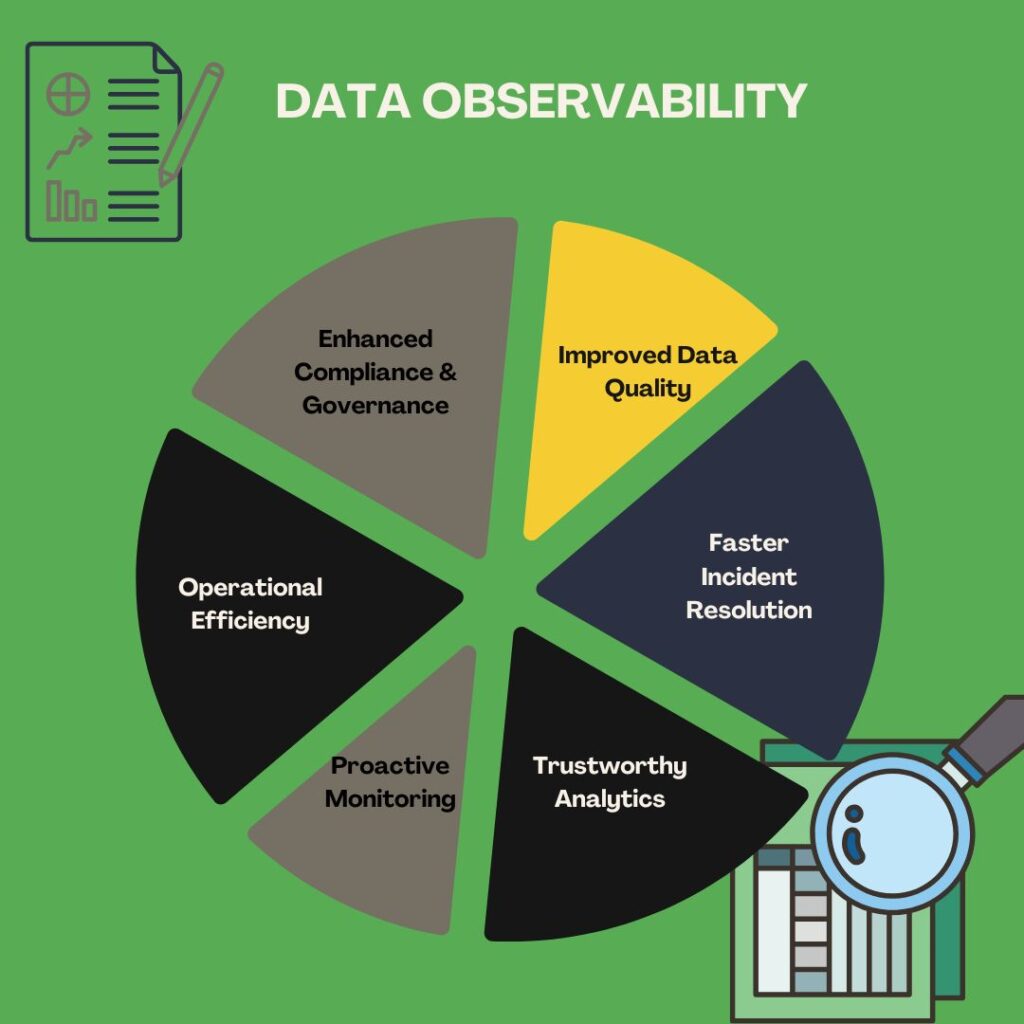In today’s data-driven world, businesses are racing to build smarter AI and analytics. But there’s a catch: your AI is only as good as your data. Behind every smart dashboard or chatbot is an ocean of information that must be clean, accurate, and trustworthy. Enter the unsung hero of the modern data stack: data observability.
The Data Problem Nobody Talks About
Over the last decade, companies have invested heavily in storing and processing data—think cloud warehouses, lakes, and endless dashboards. But while the way we collect data has evolved, the way we manage and trust that data hasn’t kept up.
Imagine building a car and immediately racing it down the highway without ever checking if the brakes work. That’s how many organizations treat their data. They build powerful systems, then hope everything works out.
What Is Data Observability?
Data observability is like having a dashboard for your data pipelines. It keeps a watchful eye on your data, alerting you the moment something looks off—whether that’s missing information, strange values, or delayed updates.
Instead of relying on manual checks or waiting for customers to spot errors, data observability helps teams spot and fix issues fast. It’s the difference between catching a small leak early and dealing with a burst pipe later.
Why It Matters More Than Ever
With AI becoming mainstream, data quality isn’t just a technical issue—it’s a business risk. If your AI model is making decisions based on faulty data, you could be offering the wrong product to a customer, denying a claim unfairly, or reporting incorrect numbers to the board.
The truth? Most companies aren’t fully confident in their data. While the push to “become AI-ready” is real, only about two-thirds of organizations believe their data is actually up to the task.
How Data Observability Works
- Automated Monitoring: Get alerted when data doesn’t show up, looks suspicious, or changes unexpectedly.
- Root Cause Detection: Quickly trace problems to their source—be it a broken system, buggy code, or outdated model.
- Continuous Learning: Over time, the system learns what “normal” looks like for your data and adapts to seasonality or business changes.
The Payoff: Trust and Speed
With data observability in place, companies move from reactive firefighting to proactive management. Teams spend less time hunting down issues and more time building products that matter. Executives get the confidence to make decisions knowing the numbers behind them are solid.

The Bottom Line
As AI and analytics take center stage, data observability is no longer optional. It’s the key to building reliable, trustworthy, and future-proof data products. If you want your AI to be smart, first make sure your data is healthy.
Don’t let bad data be your company’s blind spot. Make data observability your secret advantage.
